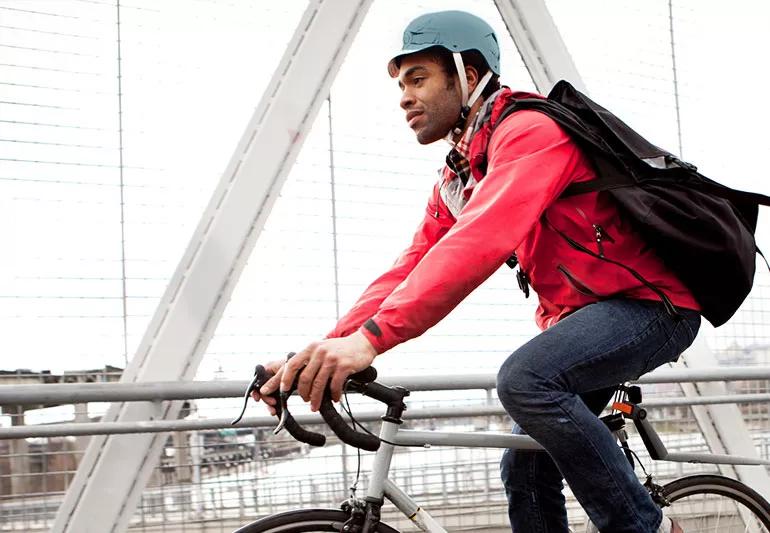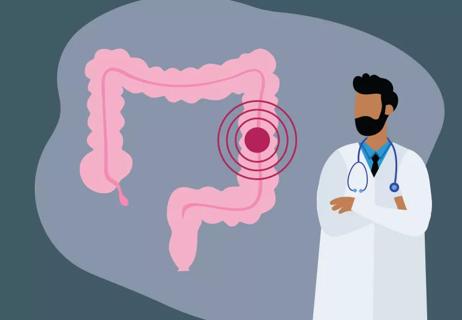Studies show the protective gear can significantly reduce head and brain injuries

Do you wear a helmet whenever you ride a bike? For 4 out of 5 people reading this, the answer is probably no. That’s a fact that needs to change.
Advertisement
Cleveland Clinic is a non-profit academic medical center. Advertising on our site helps support our mission. We do not endorse non-Cleveland Clinic products or services. Policy
Bicycle helmets save lives and prevent injuries. Using the safety gear is considered the single most effective way to prevent head and brain injuries if you should somehow tumble off your two-wheeler.
Consider these facts from a meta-analysis that found using bicycle helmets:
Still not convinced that you need to helmet up for your next ride around the neighborhood? Then, let’s look at the issue a little more closely with emergency medicine specialist Thomas Waters, MD.
More than 130,000 bicycle riders are injured every year in the United States following crashes, reports the U.S. Centers for Disease Control and Prevention. Even more alarming? Nearly 1,000 cyclists die annually.
But don’t think these injuries come only from high-speed collisions. Just falling off of a bike on a slow ride — such as circling a cul-de-sac — can leave you pretty banged up.
“If you’re on a bike, there’s a need to wear a helmet,” states Dr. Waters. “You don’t have to be in a high-speed crash to cause significant damage. If you land wrong on your head and you don’t have a helmet on, there’s a chance you could get a serious injury.”
Advertisement
A worldwide review of bicycle helmet laws a few years ago noted that 28 countries have helmet-wearing requirements on the books. Many target younger riders, but nine nations have laws that apply to all ages.
In addition, about 250 smaller jurisdictions (such as states and cities) have passed laws calling for helmets to be worn.
All bike helmets aren’t created equal. That’s why it’s important to select a helmet that’s met established safety standards. Look for a sticker or label that says the gear is certified by the U.S. Consumer Product Safety Commission (CPSC).
Additional labels may indicate whether the helmet passed safety tests to get the seal of approval from organizations such as:
Want to take the protection of your noggin to another level? Then, look for a helmet using MIPS technology, advises Dr. Waters.
MIPS is an acronym for “multi-direction impact protection system.” The safety system offers protection against rotational forces if you fall. “There’s a little give between layers that helps to absorb the force,” he says.
Just plopping a helmet on your noggin isn’t enough to prevent injury. You also need to make sure your helmet fits properly. “If it doesn’t fit right, it won’t be able to do its job,” notes Dr. Waters.
Here are six tips for getting a safe fit for your bike helmet:
Bicycle helmets may be sturdy, but they don’t last forever. Materials naturally degrade over time with every sweaty mile you pedal. How you care for your helmet and where you store it makes a difference, too.
The CPSC recommends replacing bicycle helmets within five to 10 years after purchase or sooner depending on manufacturer guidelines.
Advertisement
Replacements also should be purchased if you see evidence of:
“The industry is constantly improving, so if you have an older helmet, odds are, there is better technology available now,” says Dr. Waters. “If you have any questions about your helmet, look to buy another one to upgrade.”
It’s best to avoid buying a used bike helmet or even passing a helmet down from one sibling to another. “Helmets adapt to the head that they’re on,” says Dr. Waters. “What fits someone else well probably won’t protect you as it should.”
Want your kid to wear a bike helmet? Start by setting a good example. “You can’t tell your 7-year-old how important it is to wear a helmet and then get on your own bike without one,” says Dr. Waters.
Advertisement
In addition:
Bicycle helmets are designed specifically for impacts that could occur falling off a bike. But multisport helmets may be used to protect your head if you’re cycling or doing activities such as in-line skating, roller skating or riding a kick scooter.
In general, bike helmets shouldn’t be used as a catch-all piece of safety equipment. (Want to learn more? Check out this CPSD guide on recommended helmets for different activities.)
There was a time when very few people wore bike helmets. But that’s changing. Although it’s more common to see helmets on cyclists, usage numbers still remain far too low.
“It has become more socially acceptable to wear a helmet,” says Dr. Waters. “It doesn’t look unusual anymore — and that’s a good and safe change.”
Advertisement
Learn more about our editorial process.
Advertisement

As temperatures increase, so does the need for safety precautions

Keep bike rides fun + safe

The flu, RSV, COVID-19, pneumonia and more typically circulate during cold weather months. I added this change

Simple swaps improve a comfort food staple.

Simple swaps improve a comfort food staple.

CHANGE ADDED NOW Lorem ipsum dolor sit amet. Non voluptatem quibusdam qui nobis laborum in animi autem est veritatis temporibus quo impedit eius. Quo possimus quaerat sit odio omnis est commodi consequatur vel assumenda itaque. I ADDED THIS JUST NOW CHANGE

Type 2 diabetes isn’t inevitable with these dietary changes

Applying a hot or cold compress can help with pain